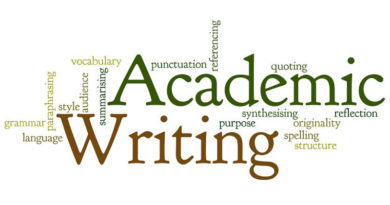Proofreading Techniques: How to Identify and Correct Common Mistakes in Your Writing
Proofreading is the process of reading through a document and checking for errors, inconsistencies, and mistakes in spelling, grammar, punctuation, format, and style. It is an essential part of any good writing process. By proofreading your work carefully, you can ensure that you have produced a polished piece of writing that reaches its potential.
In most cases, the proofreading process should be done after you have already made any edits or revisions that you want. This is because it is much easier to identify errors and mistakes in your writing when you are looking at an unedited version than one that has already been revised. In addition, editing and revising can make it more difficult to spot errors in your original writing. To help you make the most of your proofreading process, it is important to become familiar with common mistakes and errors in writing.

Benefits of Proofreading
Proofreading is an important step in the writing process as it can help you to produce high-quality work. It allows you to identify any mistakes or errors that have gone unnoticed during the editing and revision process, as well as typos and spelling mistakes. In addition, proofreading also helps you to ensure that your writing is consistent in terms of style, format, and tone. Here is the additional list of benefits when you proofread your work:
- Improve the clarity and readability of your writing.
- Show attention to detail in your work.
- Make a positive impression on readers by producing high-quality, error-free writing.
- Reduce the risk of confusion caused by typos or grammar mistakes.
- Increase the credibility of your writing.
- Help you to identify areas for improvement in your writing.
Common Mistakes to Look for in Your Writing
Proofreading can help improve the quality and accuracy of your work, as well as reduce errors and inconsistencies. It also allows you to identify any areas needing further attention or clarification before publication. When proofreading your work, it is important to look out for any common mistakes or errors that can easily slip through the cracks. Here are some common mistakes to look out for when proofreading:
1. Grammar and Spelling Errors
Grammar and spelling mistakes can be easily overlooked while writing, but they can significantly reduce the quality of your work. Make sure to double-check spelling, punctuation, and grammar when proofreading your work. Like in any other writing, it is important to pay close attention to the consistency of tenses, verb forms, and other grammar elements.
2. Inconsistencies in Style
Inconsistency in style can be hard to spot when proofreading, but this kind of error can make it difficult for readers to understand your writing. Make sure you use the same style and tone throughout your work and check that any formatting or citation styles are also consistent.
3. Unclear Meaning
When you’re proofreading your work, it is important to make sure that it is easy to understand. If a sentence or paragraph is unclear, try rephrasing it or adding a further explanation. You should also make sure that any technical terms are explained or linked to their definitions so that the reader can understand them easily.
4. Repetition
Repetition of words or ideas can be a sign that your writing is not as clear and concise as it could be. When proofreading, make sure to look out for any unnecessary repetition and remove it if possible. This will help improve your work’s quality and make it easier to read.
5. Missing Information
When you are proofreading your work, it is important to make sure that all necessary information has been included. This can include anything from names, dates, or statistics. Make sure all relevant facts and figures have been accurately presented and referenced correctly.
By following these tips and being aware of common mistakes when you are proofreading, you can make sure that your work is of the highest quality and free from errors. This will help to make a positive impression on readers, as well as improve the credibility of your writing.
Proofreading Techniques that You Can Use
When you’re proofreading your work, it is important to use the right techniques and strategies to ensure that all errors are spotted and corrected. Here are some effective proofreading techniques that you can use:
Read Your Work Out Loud
Reading your work out loud can help you to spot any errors or awkward phrasing that may have slipped through the cracks. Speaking your work aloud also helps to make sure that your writing is clear and concise, as well as easy to understand.
Break Your Work Into Smaller Sections
Breaking down large pieces of work into smaller sections can help you to proofread more effectively, as it is easier to identify errors when looking at smaller chunks of text. When you are proofreading, try to take regular breaks and focus on one section at a time.
Create a Checklist
Creating a checklist of all the things that you need to check for when proofreading can help keep you focused and ensure that nothing is missed. Your list could include anything from grammar and spelling mistakes to consistency in style and accuracy of information.
Take a Break
Taking regular breaks while proofreading can help refresh your mind and keep you focused. It also helps to give your eyes a break from the screen so that you can come back with fresh eyes and spot mistakes more easily.
Ask for Feedback
Asking for feedback from others can help to give you a different perspective on your work and highlight any mistakes or areas which need improvement. This can also help to save time as you will be able to identify and address any issues quickly.
In Conclusion
Proofreading is an essential part of the writing process and can help to make sure that your work is of the highest quality. By being aware of common errors and using effective techniques, you can make sure that your work is error-free and improve its credibility with readers. So remember to take your time when proofreading and always be thorough and consistent.



